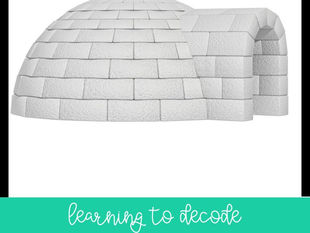
Free Morphology Practice Presentations for Reading Teachers Homepage
Apr 7, 2024
3 min read
0
138
0
In the vast and intricate landscape of language education, the teaching of morphology—the study of the forms of words and their smallest meaningful units, known as morphemes—stands out as a crucial but often underappreciated component. Morphology, with its roots deeply embedded in the structure of language, offers a key to unlocking reading, writing, and spelling skills, particularly as students advance in their academic careers. This blog post delves into why teaching morphology is not just beneficial but essential for developing proficient and confident language users and includes free morphology practice presentation links!
Building Blocks of Understanding
Morphology teaches students about the building blocks of words, including roots, prefixes, and suffixes. This knowledge empowers learners to decode and understand new words by breaking them down into their constituent parts. For instance, understanding that the prefix “un-” means “not” or “opposite of” enables students to grasp the meaning of unfamiliar words like “unhappy” or “unfair” without consulting a dictionary. Such analytical skills are foundational for reading comprehension and vocabulary development.
Enhancing Vocabulary and Reading Comprehension
A solid grasp of morphology contributes significantly to vocabulary expansion. When students learn how to dissect and analyze the structure of words, they can apply this understanding to a myriad of new terms, thereby enriching their vocabulary. This expanded vocabulary, in turn, plays a pivotal role in reading comprehension. With a larger lexicon, students can more easily understand texts, reducing the cognitive load required for decoding individual words and allowing them to focus on the broader meaning of the text.
Improving Spelling and Writing Skills
Morphological knowledge directly impacts spelling and writing skills. By understanding the relationship between words and their morphological structures, students can spell with greater accuracy. For example, knowing the root “spect” (to look) helps students spell related words such as “inspect,” “spectator,” and “respect.” Furthermore, morphology instruction enhances writing skills by enabling students to manipulate word forms to suit different contexts, thereby achieving precision and variety in their writing.
Supporting Struggling Learners and ELL Students
Teaching morphology is particularly beneficial for struggling learners and English Language Learners (ELLs). For these students, understanding the logic behind word formation can be a lifeline, providing a systematic approach to deciphering the English language. Morphological strategies offer concrete tools for these learners to tackle complex vocabulary and syntax, thereby leveling the playing field and boosting their confidence in language acquisition.
Cultivating Lifelong Learners
Lastly, morphology instruction cultivates lifelong learners. It encourages curiosity about the origins and structure of words, fostering an appreciation for language that transcends the classroom. Students who are adept at morphological analysis are better equipped to independently learn new words and concepts throughout their lives, an invaluable skill in an ever-evolving world.
The teaching of morphology is more than a mere academic exercise; it is a powerful tool that unlocks the potential of language learners across all ages and abilities. By incorporating morphology into language instruction, educators can provide students with the keys to unlock reading, writing, and spelling success, setting them on a path toward confident communication and lifelong learning. Let us embrace the study of word forms not as a niche interest but as a central pillar of language education, essential for developing skilled, adaptable, and enthusiastic readers and writers.
Free Morphology Practice Presentations
Base Words
The Suffixes -S and -ES
The Suffix -ING
The Suffix -ER for Comparative Adjectives
The Suffix -EST for Superlative Adjectives
The Suffix -ER for Someone Who
The Suffix -ED for Past Tense Verbs
The Prefix UN- MEANING OPPOSITE OR NOT
The Prefix RE- MEANING AGAIN
The Prefix DIS-
THE Suffixes -ER and -OR MEANING A PERSON WHO
The Prefix IN- Meaning Not
The Suffix -FUL Meaning Full Of
The Suffix -LESS Meaning Without
The Suffix -Y Meaning What Something is Like
The Suffix -LY Meaning How an Action is Done
The Prefix UNDER
The Prefix OVER
The Prefix NON
The Prefix PRE
The Prefixes BI/DI
The Prefix TRI
The Prefix QUAD
The Prefix OCT
THE SUFFIX ION
THE SUFFIX NESS
The Prefix SEMI
The Prefix SUPER
The Prefix MULTI
The Prefix POLY
The Prefix TELE
The Prefix MID
The Prefix MIS
The Prefix INTER
The Prefix DECA/DECI
The Prefix KILO
The Prefix SUB







